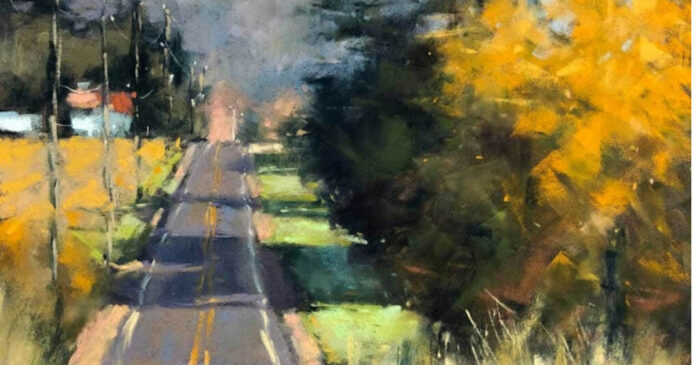Marla Baggetta shares her strategy for kicking common bad habits that create road blocks in the painting process.
We all have times when the painting process isn’t going smoothly—when we hit those rough patches. It simply comes with being an artist. While we know that not every work can be a masterpiece, we still hope to improve our skills with each painting—and to make a great one every now and then. The good news is that if you’re able to identify the mistakes that you’ve made in a painting, you can begin to address them and make positive changes to improve your technique.

Identify Bad Habits
Make a list of your bad painting habits. We all have them. Here are some of the most common ones:
Not having a clear concept or understanding of why you’re painting a subject or scene
Mark-making just for the sake of it
Overworking the same areas
Placing objects in the exact center of the composition
Using the same color palette over and over
Making a muddy mess of your colors
Lacking the confidence to push forward in a piece
Most of the mistakes I see my students make arise from a lack of planning, from quitting too soon or from taking a timid approach to a painting out of fear they’ll ruin it.
Know Your Why
One of the biggest reasons a painting can fail is because the artist doesn’t have a compelling reason for painting the subject in the first place. First and foremost: Figure out what your story is. What intrigues you about the subject or scene? What initially grabbed your attention? Think about what you’re trying to communicate to the viewer.
Stay focused on your “why” throughout the painting process, but especially in the beginning stages. Make sure you’re doing everything you can to serve your story or concept when making choices about size, proportion, composition, color scheme, mark-making—everything. Of course, this doesn’t mean that you need to be 100 percent certain about what you’re trying to say when you start a piece, or that the creative process shouldn’t lead you in another direction at some point––but having a clear understanding of your “why” when beginning a painting helps you navigate when things get dicey. And they will get dicey!

Make a Plan
You must construct a solid foundation for your painting, otherwise you’ll end up in an unruly and messy place. That’s not to say that rules can’t be broken or that you can’t have fun, but the process works better (and can be even more fun) when there are a few constraints in place. I can’t stress enough the importance of using all the tools at your disposal to help construct your piece, including thumbnails, color studies, value scales, viewfinders and proportion wheels.

See It Through
I can’t tell you how many times I’ve walked up to a student, only to find them about to give up on a piece that I think is just getting going. The lesson is that you must be patient and let the piece come together. You don’t have to believe that every painting is going to turn out great, but you should trust in the process you’ve put in place for yourself. With practice, you’ll gain more and more confidence and be able to see the pathway to the finish more clearly with each new painting.

Make it Sing
Don’t be precious with the work or overly attached to certain sections of a painting. Sometimes you have to sacrifice parts of the piece to make it work as a unified whole. Don’t be afraid to really punch up areas at the end. Even if you’ve carefully applied thin layer after thin layer, there comes a moment when a stronger commitment is needed—so go ahead and press hard into the paper with light highlights and dark accents.
With a little inquiry, structure and effort, you’ll be able to identify your trouble zones and navigate through them to create more successful artwork.

About the Artist
Marla Baggetta is the author of Step-by-Step Pastel. Her award-winning paintings can be found in numerous public and private collections throughout the country.

